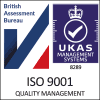Course Overview
Download Course FactsheetUE Systems | Level 2 | CAT II Ultrasound Training
Locations: Rotherham, Kirkcaldy
Assessment: General, Specific and Practical examinations with a combined score of 80% or better to pass. (Review of weeks material and 2-hour 80-question multiple choice exam)
Certificate Gained: UE Systems Category Level 2 Certification
Course Duration: 5 Days (32 Hours)
Entry Requirements: CAT II is an advanced course. Students must meet Level I requirements before enrolling. Hearing acuity must meet the minimum requirement of one ear of less than 25 dBHL at 500 Hz to 4 kHz (with or without aid)
Book your place on the Category 2 course today by filling in our online booking form to the right, or by calling the team directly.
Entry Requirements / Suitability
CAT II is an advanced course. You must meet Level I requirements before enrolling on this course.
Hearing acuity must meet the minimum requirement of one ear of less than 25 dBHL at 500 Hz to 4 kHz (with or without aid).
Each Candidate for Level II certification of Airborne/Structure Borne Ultrasound should:
- Be Proficient with their ultrasonic device
- Be Proficient with collecting data in the field
- Should have basic computer skills (i.e. Word, Excel, Email)
- Basic Working Knowledge of Level I Material of Airborne/Structure Borne Ultrasound
Course Suitability
In order to achieve an official certification, you must attend certification training (32 hours of classroom training) and must pass the General, Specific and Practical examinations with a combined score of 80% or better.
Documentation of education or experience must be maintained annually.
Hearing acuity must meet the minimum requirement of one ear of less than 25 dBHL at 500 Hz to 4 kHz (with or without aid.) Hearing acuity examinations must be documented annually.
Documented experience signed by a supervisor or superior for 6 months in addition to the Level I experience of 6 months, for a cumulative 12 months’ experience to qualify for official certification of Level II.
Certification
UE Systems Category Level 2 Certification
Assessment
The assessment is a combination of General, Specific and Practical examinations. On the final day of the course, you will have a review of the full week’s material and a final exam.
- A Review of the Weeks Material for Final (45min)
- 2-hour Final Examination (80 multiple-choice questions)
Course Outline
This 32-hour course is designed to meet the intent of SNT-TC-1A and is in accordance with ISO 18436-8. Students successfully completing this course are familiar with the scope and limitations of Airborne/Structure Borne Ultrasonic Inspection, are able to set up and calibrate equipment, interpret and evaluate results with respect to applicable codes, standards, and specifications, and organize and report inspection results.
Course content consists of:
- Advanced Theory of
- Airborne/Structure Borne Ultrasound
- Compressed Gas Leaks
- Electrical
- Mechanical
- Valves
- Steam Traps
- Bearings
- Lubrication
- Advanced Inspection Logistics
- Condition Monitoring Principals
- Best Practices of Data Collection
- Data and Sound Analysis
- Writing and Establishing Procedures
- Program Implementation
- Generating Reports
Airborne/Structure Borne Level II Course Synopsis by Day
MONDAY (8hrs)
- ASNT SNT-TC-1A, ISO 18436-8, UEQ-TC-1A
- Sound Theory and Condition Monitoring
- Ultrasound Theory, Low Frequency versus High Frequency, Sound Characteristics, Acoustic Impedance, Reflection, Absorption,
- Scattering, Attenuation, Inverse Distance Law;
- Sources of Ultrasound;
- Definitions of Frequency, Decibel, Sensitivity;
- Deeper Understanding of Heterodyning, Time Wave Form, FFT – Fast Fourier Transform
- Decibel vs FFT/Time Wave Form
- Condition Monitoring
- Principals of Conditioning Monitoring;
- Thermography, Vibration Analysis, Oil Analysis, Motor Circuit Analysis;
- The P-F Curve;
- Equipment Condition and Times;
- Understanding Cost;
- Ultrasound in Condition Monitoring;
- Best Practices of Condition Monitoring
- Following Procedure, Timelines, Criticality Analysis, Failure Mode Analysis, Route Building, Repeatability
- Ultrasonic Equipment
- Equipment, Transducers, Heterodyning, Frequency Tuning;
- Airborne Ultrasound Equipment, Displays and Basic Operation, Modules, Dedicated Monitors Tone Generator ;
- Adjusting the Sensitivity of the Equipment, Checking the Sensitivity of Equipment;
- Data Management Software, Spectral Analysis Software;
- Practical Quiz of Day’s Lessons
Tuesday (8 hrs)
- Data Collection
- Best Practices of Data Collection, Data Collection with Airborne Structure Borne Ultrasound;
- Compressed Gas
- Leak Inspection, Leak Inspection Strategies, SAFETY, Pressure & Vacuum Leaks, Procedure,
- Compressed Air Leak Survey, Reporting; Hands-on Practice of Cost Analysis and Reporting
Electrical - Electrical Inspection, Analyzing Corona, Analyzing Tracking, Discharge Points of Tracking, Discharge Points of Arcing, Loose Vibrating Components, Performing Inspection, Establishing a Procedure, Important Considerations, Troubleshooting/Baseline Procedures,
- Trending Procedures;
- Hands-on Practice of Analysis of different Electrical Anomalies;
- Practical Quiz of Day’s Lessons
Wednesday (8 hrs)
- Valves
- Cavitation in Valves, Flashing in Valves, Write the Procedure, Reporting;
- Steam Trap Inspection
- Steam Trap Function, Type of Traps, Mechanical Trap, Inverted Bucket Trap, Float Trap
- Float and Thermostatic Trap, Thermostatic Traps, Metal Expansion Traps, Balance Pressure Bellows, Bi-Metallic Trap, Thermodynamic Traps ;
- Reasons Why Steam Traps Fail; Steam Trap Inspection; Safety;
- Hands-on Practice with the software of Steam Trap Analysis and Reporting
- Practical Quiz of Day’s Lessons
Thursday (8 hrs)
- Bearing Inspection
- Bearing Dynamics, What is a Bearing? Bearing Failure Mechanisms, Bearing Inspection, Mechanical Testing Best Practices, Inspection Methods, Mechanical Inspection Trending
- Recommended Procedure for Ultrasonic Analysis and Lubrication of Bearings
- Basic Lubrication Principles, Lubrication with Ultrasound, Proper Steps Using Ultrasound to Lubricate, Over Lubrication, Lubrication
- Procedures, Mechanical Inspection Safety Tips;
- Hydraulic Inspection;
- Pumps and Cavitation;
- Gear Boxes and Using a Time Wave Form Spectral Analysis;
- Hands-on Practice of DMS Route Building;
- Hands-on Practice of UE Spectralyzer analyzing mechanical faults;
- Hands-on Practice of Generating Reports;
- Practical Quiz of Day’s Lessons
Friday (4 hrs)
- Review of Weeks Material for Final (45min)
- 2-hour Final Examination (80 multiple-choice questions)
Reading & Resources
Each candidate for Level II Certification of Airborne/Structure Borne Ultrasound must bring:
- A Working Laptop with Admin rights for software install and input/export of data through usb/card reader slots (or software already installed)
- UE Systems’ Latest Version of Ultratrend DMS software installed
- UE Systems’ Latest Version UE Spectralyzer Software installed
- Bringing your own Ultraprobe is highly recommended but not essential
- Steel Toed Safety Shoes








